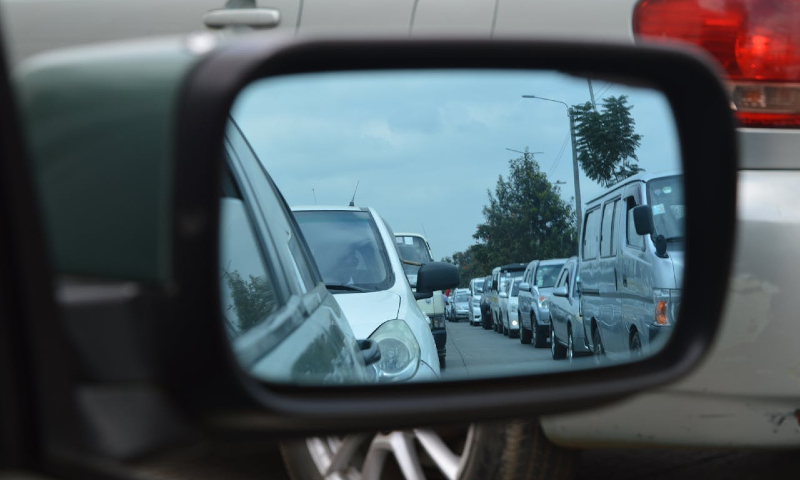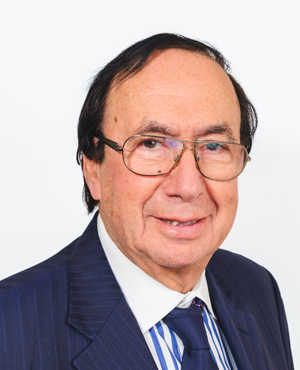I Rear-Ended Someone Who Stopped Suddenly. Who’s at Fault?

Rear-end accidents tend to come with plenty of finger-pointing over who was really at fault and liable. While the trailing driver is often presumed negligent for failing to leave sufficient stopping distance, that’s certainly not always the case.
If the lead driver made an abrupt or unjustified stop, intentionally brake checked the rear vehicle out of nowhere, or failed to give any warning due to brake light issues – they may bear full or partial responsibility for causing the crash.
If you’ve been rear-ended or rear-ended someone who stopped abruptly, the biggest question is: who’s legally at fault? As is so often the case, the answer is…it depends.
The Rear Driver is Typically Considered At-Fault
In New York and most states, there’s a presumption of negligence for the rear driver in rear-end accidents. This is based on the idea that drivers must maintain a safe following distance to allow for sudden stops (New York Vehicle and Traffic Law § 1129).
However, this presumption can be rebutted in certain circumstances, such as if the lead driver stopped suddenly without justification or had malfunctioning brake lights. Additionally, under New York’s “pure comparative negligence” rule (New York Civil Practice Law and Rules § 1411), even if the rear driver is partially at fault, they may still recover damages proportional to the lead driver’s degree of fault.
The specific facts of each case determine fault and liability in rear-end accidents in New York. Consult with a qualified attorney to evaluate your case and advise you on your legal options.
Establishing the Lead Driver’s Fault
However, this presumption of rear driver negligence is rebuttable – meaning it can be challenged and overcome with sufficient evidence that the lead driver was actually at-fault for causing the collision through their own unreasonable actions.
Some potential situations where liability may shift to the lead driver include:
- They stopped suddenly with no apparent justification or hazard in the road
- They intentionally “brake checked” you or slammed on the brakes in a road rage incident
- Their brake lights were faulty, preventing you from being warned about the abrupt stop
- They purposefully caused the rear-end collision in an attempt at insurance fraud
In cases like these, the burden is on you and your legal team to gather evidence demonstrating why the lead driver’s conduct was negligent and the primary cause of the crash – not any failure to maintain a safe following distance on your part.
Investigating the Circumstances of the Rear-End Crash
To overcome that presumption of rear driver negligence, prompt and thorough investigation to preserve all available evidence is absolutely critical. Key sources may include:
- The official police accident report and any statements from witnesses
- Photographs and video footage from the accident scene, if available
- Inspections assessing the damage patterns on both vehicles involved
- Data readouts from the vehicles’ “black box” event data recorders (EDR)
- Analysis from hired accident reconstruction experts in certain cases
Detailed evidence surrounding things like vehicle speeds, distances, braking inputs, and driver response times leading up to impact can often help establish exactly why the collision occurred and who failed to act reasonably. It provides critical context beyond just a bare conclusion of “the rear driver struck the other vehicle.”
In some situations, you may also need accident reconstruction analysis if liability is contested and comes down to split-second calculations about braking distances, reaction times, and applied physics. These experts can analyze all the evidence to render an opinion on how the accident sequence unfolded and which party was truly negligent.
Considering Comparative Negligence Laws in New York
Even if you can show that the lead driver stopped abruptly without proper justification, there’s still a chance you could be assigned some contributory negligence for following too closely initially.
New York follows a “pure comparative negligence” model (New York Civil Practice Law and Rules § 1411). This means that if both parties are deemed at fault to some degree, each will be assigned a percentage of blame. Any damages awarded to the plaintiff will be reduced by their percentage share of negligence.
For example, if a jury finds the lead driver 60% at fault for an unjustified abrupt stop but also assigns you 40% liability for following too closely initially, your total damage recovery would be reduced by 40%.
Unlike some other states, New York’s pure comparative negligence system allows you to recover damages even if you are found to be more than 50% at fault. However, the amount you can recover will be reduced by your percentage of fault.
Why Hiring a Rear-End Accident Attorney is Crucial
If you were involved in a rear-end crash, regardless of whether you were the lead or trailing driver, having an experienced personal injury lawyer in your corner from day one is absolutely essential. Here’s why:
First and foremost, overcoming the presumptive liability assigned to rear drivers is very difficult and requires constructing a comprehensive, evidence-driven argument that compellingly establishes the true cause and mechanics of the accident.
As your legal advocate, our role is to conduct a thorough independent investigation while these critical details are still fresh – interviewing witnesses, analyzing damage, preserving crucial EDR data before it gets overwritten, and more. From there, we build the most strategic legal theory and case to counter any contributory negligence allegations.
Working with skilled rear-end accident attorneys also provides leverage when engaging insurance companies in negotiations. We understand all the bad-faith tactics they’ll attempt, from arguing you were tailgating or distracted to minimizing your injuries and damages. With experience honed over years of experience, we’re prepared to aggressively advocate for the full compensation you deserve.
More broadly, we know navigating these complex claims can quickly become overwhelming for those unfamiliar with New York laws surrounding liability, filing timelines, comparative fault calculations, and more. Having a dedicated legal team handle these complex logistics allows you to focus on what truly matters – your recovery.
Common Defense Tactics Used by Insurance Companies
As touched on above, even when a rear-end collision seems clear-cut, insurance companies will pull out every trick to avoid maximum payouts:
- Claiming you were following too closely, speeding, or failed to maintain control
- Arguing the lead driver’s abrupt stop was reasonably foreseeable based on traffic conditions
- Alleging you were distracted by phones or other behavior at the time of impact
- Disputing severity of your injuries and argued damages amounts
Their goals? Shift as much blame for the accident onto you as possible to reduce how much they have to pay out. Or drag out proceedings through “endless” unreasonable lowball offers and delays – hoping you’ll simply give up and accept a diminished settlement out of desperation.
These are just a few examples of why skilled legal representation by a rear-end collision attorney is invaluable. We understand their bad-faith tactics and are prepared to forcefully counter each argument with evidence, case law, and aggressive advocacy on your behalf.
Far too often, we see crash victims get taken advantage of and bullied by profit-driven insurance giants when they lack competent legal counsel in their corner. With so much at stake financially, you simply can’t afford subpar representation.
If you were involved in a rear-end crash in Brooklyn, NY, reach out to Held, Held & Held today to explore your legal options. Whether you were the lead driver or rear vehicle, our dedicated personal injury team will fight tirelessly to establish fault and liability, maximize your deserved compensation, and hold any negligent parties fully accountable – not the insurance companies.
Your consultation comes with no costs or obligations, so you can gain strategic legal guidance from day one. Don’t get bullied into accepting an unfair settlement – let us be your passionate advocates through every stage of this process.
